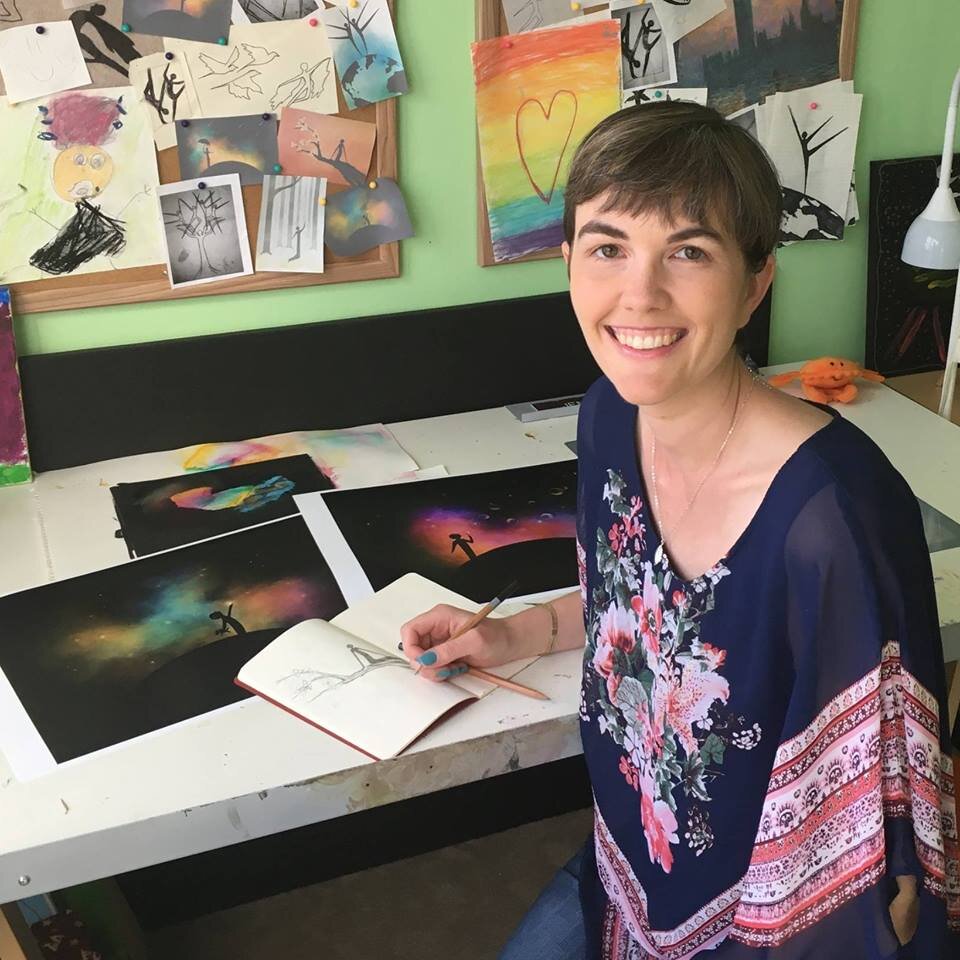It’s time to take a look at another creatively inspirational author. Over the course of time and several posts, I’m going to highlight a few books written by Neil Gaiman. If you are already familiar with Neil Gaiman, you know that he is an author who deftly uses language, tells unique stories and challenges genre norms. He has written a wide variety of books, in theme, tone and audience. He is an author that one can follow from childhood into adulthood. His books are original and exceptionally creative. They are bound to provide great inspiration to those on a creative journey. Pick one…any one…and pay attention to the way he weaves a story, creates characters, and forms expectations, only to turn them upside down.
Since I have already written a few posts on storytelling, I figured I’d begin my look at Neil Gaiman’s writing by focusing on Fortunately, the Milk. This is a middle-grade chapter book that is perfect for elementary-aged kids. It is a ‘then-what-happened?’ kind of story that follows the crazy adventures of a dad who went out to get milk, and it’s a good thing he did. That milk saves the world.
Fortunately, the Milk is not only a fun read, and an even better read-aloud, it is a great example of storytelling. The book models the storytelling methods of ‘then what?’ and ‘action-reaction’. (I made those terms up. They just sound right to me).
When the dad in the story finds himself on an alien spaceship, he chooses to open a door that says, ‘DO NOT OPEN FOR ANY REASON’. The choice to open the door is an action. The reaction is our ‘then what?’ moment. What happens when he opens that door? It could be anything. Whatever we can imagine, can happen. In this case, the dad falls into the sea and is rescued by pirates. But the question is…then what happens??
This is a fantastic type of storytelling to get anyone started. It focuses on the action, on the next thing to happen, rather than on character development. It’s great for kids to let their imaginations run wild, to focus more on the happenings in the story. Character development doesn’t have to take center stage. Storytelling can start with an idea and follow through with action.
In Fortunately, the Milk, the children interrupt their father’s storytelling to ask questions, to ponder whether or not their dad actually encountered these crazy circumstances or if, perhaps, he’s just making it all up. The children want their dad’s story to make sense and sometimes, it just doesn’t. That’s another thing I love about this book, it doesn’t make sense. It doesn’t have to. It shows that the stories that flow from our imaginations can do just that…flow. We can allow whatever comes up to just be. We have the freedom to follow where the story leads us. Sometimes, we control the story. Sometimes, the story controls us. When the story is in control, it’s magic. Let it take over. See what happens.
In the end, the children in the story look around their kitchen and see inspiration for all the elements of their dad’s story. There’s a book, toys, a calendar on the wall, all related to ideas that popped up in the story. Was the story true? You decide. But don’t forget…inspiration is always around you. Be observant. Look for the story that’s right there in the room with you.
I highly recommend getting your hands on Fortunately, the Milk and reading it with your kids. Adults will likely enjoy the hilarity as well. I sure did, and so did my husband. After you’ve read it (or before, if you’d prefer) give these Gently Guided Activities, inspired by the book, a try:
Activity #1 Let’s give ‘then what?’ storytelling a try! We’ll try telling this story aloud. Start with a simple premise. For example, a boy walked down the street and saw his neighbor’s dog flying. Then what? What does the boy do? What does the dog do? Is anything else strange happening? After each new element, ask the question ‘Then what?’ or ‘What happens next?’ See how far your story can take you. Try looking around your own space or out your own window for inspiration. Ideas are everywhere!
Activity #2 For this one, let’s write a story down. Try writing about yourself from the first-person perspective (I did this.. I did that…). Start with a normal event and then make it extraordinary. ‘My ball rolled down the street. I ran to get it. On my way back, you’ll never guess what happened…’ Make it crazy and unbelievable. Let your imagination go wild. It can be short and sweet or an epic adventure. Don’t forget to ask yourself ‘Then what?’ whenever you get stuck.
Activity #3 If you find it too hard to start from scratch, take a few elements from Fortunately, the Milk and weave your own story. Throw your own character into the mix and see what happens. Maybe you’d like your character to encounter aliens in a hot air balloon or dinosaurs on a pirate ship. What would happen in your version of the story?
Activity #4 Don’t feel like storytelling or writing? Take one of the fantastical ideas from the book or imagine a crazy scenario of your own. Sketch it out. Rather than telling the story through words, tell it using a picture, or a series of pictures. Words are only one way to tell a story. Have fun and let your story colorfully come to life.
If you’re interested, watch me and my daughter give ‘Then What?’ storytelling a try in the video below:
If you read the book or try the activities, let me know in the comments. I’d love to hear about your creative adventures!





